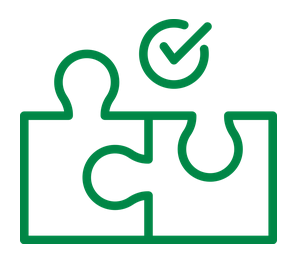As organizations grow, their applications also face increased demand. This demand typically includes more data processing and additional users accessing the system simultaneously. If an application can’t handle this growing demand, it may become slow, unresponsive, or even crash, resulting in a negative user experience and potentially lost revenue.
For this reason, your organization must develop applications that can keep up with its ever-changing business needs. This is where application scalability comes in.
What is Application Scalability?
Application scalability refers to an application’s ability to handle increasing amounts of load, users, data, or other resources without experiencing a significant decrease in performance or reliability.
In other words, when an application is designed to be scalable, it can accommodate growth and increased demand by adding additional resources such as servers, databases, or network bandwidth. This ensures that the application can continue functioning effectively even as the workload and user base grows or when things go awry (reliability).
Because databases are part of every application architecture, database scalability should be considered earlier in application design. Database scalability refers to a database’s ability to handle increasing amounts of data and users without compromising performance or data integrity. This can involve scaling up (vertically) by adding more resources to a single database server or scaling out (horizontally) by distributing the workload across multiple servers.
Why Build a Scalable App?
As businesses expand, they need to support more users, transactions, and data. This growth necessitates the development of scalable applications capable of accommodating the increased demand for services. Scalable apps provide a high-quality user experience while reducing the risk of downtime, data loss, and other performance issues that can negatively impact business operations.
In addition to these benefits, app scaling can also foster customer trust. When your business can guarantee that its application will handle increased demand without sacrificing performance, customers are more likely to trust your business and continue to use its services. Trust is an essential component of customer loyalty, and a scalable app can help to establish and maintain it.
How to Build Scalable Applications
Scalability should be a consideration from the beginning of the application development process. When solutions architects design a solution, they should consider the future of the application with scalability in mind and plan for growth.
To build a scalable application, it is important to follow industry best practices and use proven techniques. Here are some key factors you can consider to build a scalable app:
Modularity
Modularity refers to the application’s ability to break down into smaller, more manageable components or modules. Modularity enables developers to add new features or functionalities to an application without disrupting the existing code. This helps to maintain the application’s stability and scalability over time.
Horizontal and Vertical Scalability
Horizontal scalability involves adding more servers or instances of the application to distribute the workload across multiple machines. Vertical scalability involves upgrading the existing hardware or optimizing the application to handle more work on a single machine. By combining both approaches, businesses can create a more flexible and scalable infrastructure.
Scalable Technologies
Using scalable technologies such as microservices architecture, containers, and serverless computing can help build applications that scale up or down to meet changing demands. These technologies allow developers to create applications that can adapt to varying traffic, data volume, and workload requirements.
Content Delivery Network (CDN)
A content delivery network (CDN) is a group of servers located in different parts of the world that work together to deliver content to users faster. By utilizing a CDN, businesses can reduce latency, increase speed, and improve the user experience of their applications.
Caching
Caching involves storing frequently accessed data in memory or on disk to reduce the number of requests to the server. By caching data, applications can reduce the workload on the server, resulting in faster response times and improved performance.
Scalability Testing
Scalability testing involves testing an application’s ability to handle an increasing workload. This type of testing helps businesses identify performance bottlenecks and other issues that can negatively impact an application’s scalability.
Security
Security is an essential aspect of any application. Building an application with security in mind from the start can help to prevent security breaches and maintain the application’s scalability over time. Secure coding practices, regular security audits, and encryption are all key components of security best practices.
App Scaling Issues
Application scaling issues can arise due to several factors. Some common problems include:
Unscalable Architecture
Applications that are not modular (monolithic), tightly coupled, or rely on legacy technologies can be challenging to scale as new features or functionalities are added. This can lead to code complexity, making it challenging to handle an increasing workload, identify performance bottlenecks, and optimize the application for scalability.
Resource Constraints
Scaling an application requires additional resources, such as computing power, storage, and bandwidth. However, these resources can be limited or expensive, leading to constraints that can impact the application’s scalability.
Data Inconsistencies
As an application scales and more users access it, the volume of data being processed increases. This can lead to data inconsistency issues where different parts of the application store different versions of the same data, leading to conflicts and inaccurate results.
Security Vulnerabilities
As an application scales, it can become a more attractive target for cyber attacks, leading to increased security vulnerabilities. This requires additional measures to ensure the application remains secure.
Costs
As an application scales, the cost of hosting, maintaining, and supporting it can increase significantly. This includes the cost of hardware, software licenses, infrastructure, and human resources required to manage the application.
Importance of Scalability Testing
Application scalability testing is a critical process that evaluates an application’s ability to scale and handle increasing workloads. It is essential to ensure that an application can meet the demands of a growing user base and maintain optimum performance levels. Here are some key reasons why application scalability testing is important:
Identifying Scalability Issues
 Scalability testing helps identify issues and bottlenecks impacting an application’s performance. This allows developers to address these issues before they affect users, ensuring the application remains performant and available.
Scalability testing helps identify issues and bottlenecks impacting an application’s performance. This allows developers to address these issues before they affect users, ensuring the application remains performant and available.
Optimizing Resource Utilization

By identifying the optimal number of resources required to handle increasing workloads, scalability testing helps organizations optimize resource utilization. This helps avoid overprovisioning or underprovisioning resources, which can lead to performance issues or increased costs.
Improving User Experience

Ensuring that an application can handle increasing traffic and workloads without compromising user experience is the primary goal of scalability testing. By identifying and addressing scalability issues, organizations can provide a seamless and responsive user experience, increasing user satisfaction, engagement, and trust.
Meeting Business Goals

A scalable application that can handle increased traffic and transactions helps businesses achieve their goals, such as growing revenue, customer acquisition, or market share. Scalability testing helps ensure that the application can support these business objectives.
Conclusion
In conclusion, app scaling requires technical expertise, strategic planning, and ongoing monitoring. By focusing on modularity, horizontal and vertical scalability, scalable technologies, CDN, caching, scalability testing, and application security, businesses can build scalable applications that meet the needs of their growing customer base, deliver a high-quality user experience, and maintain optimal performance.
You can learn more about how Couchbase enables database scalability here:
